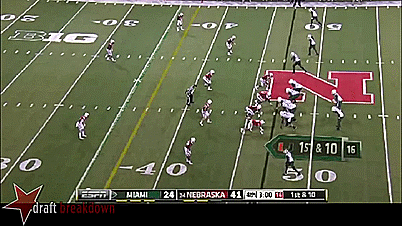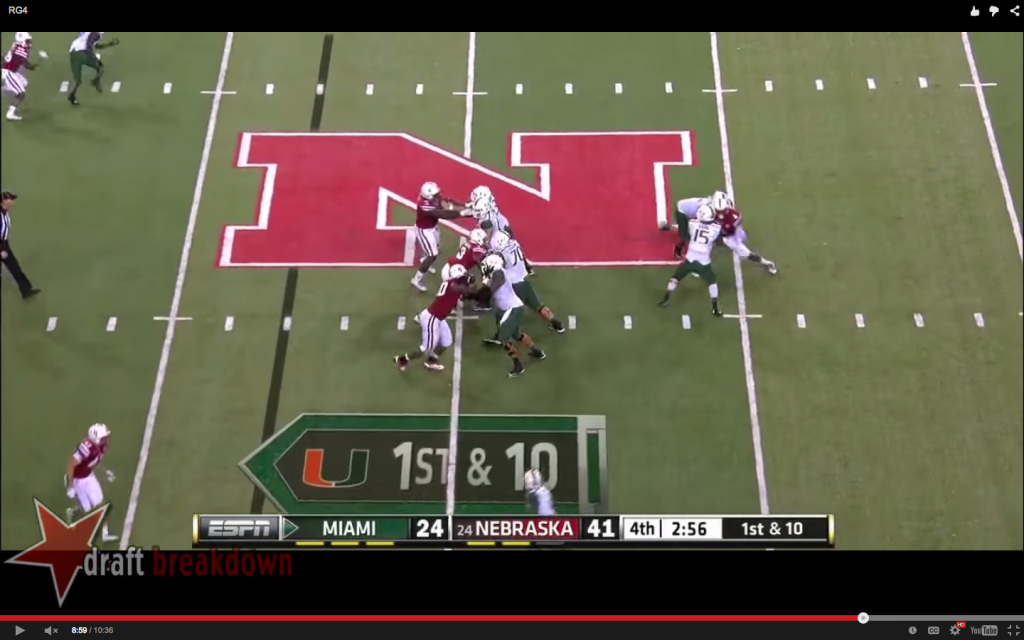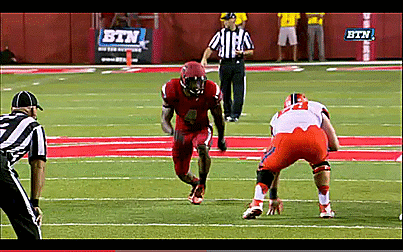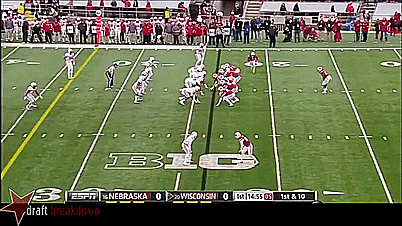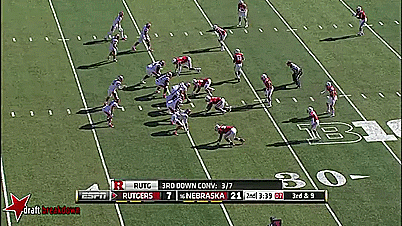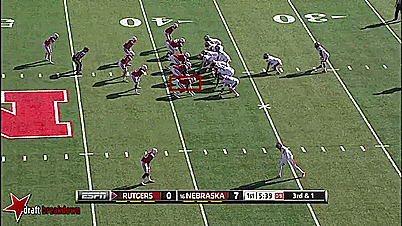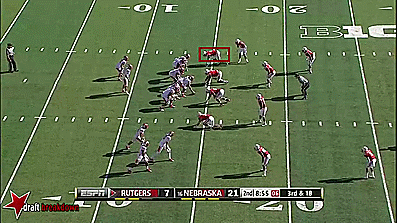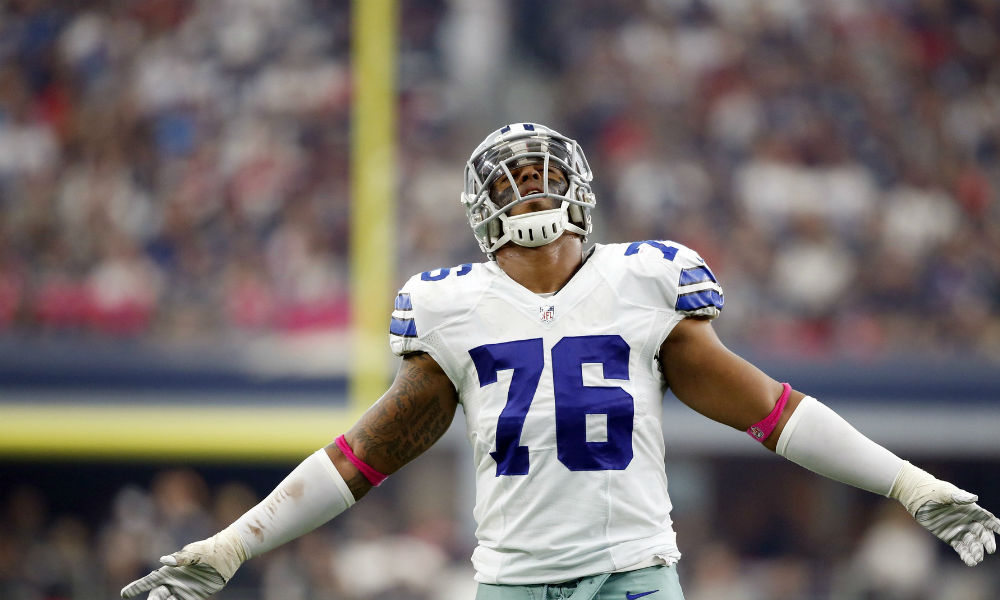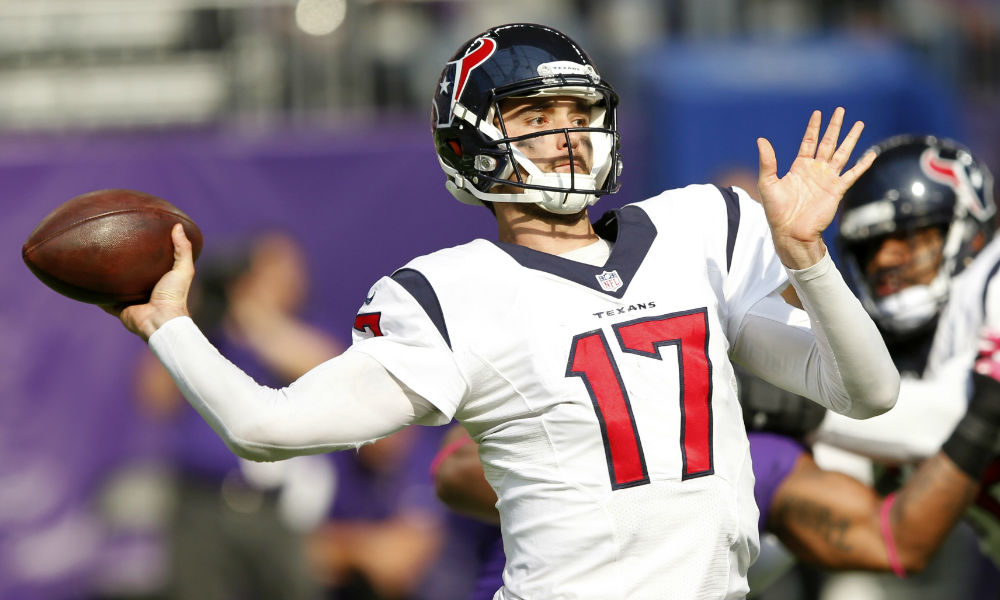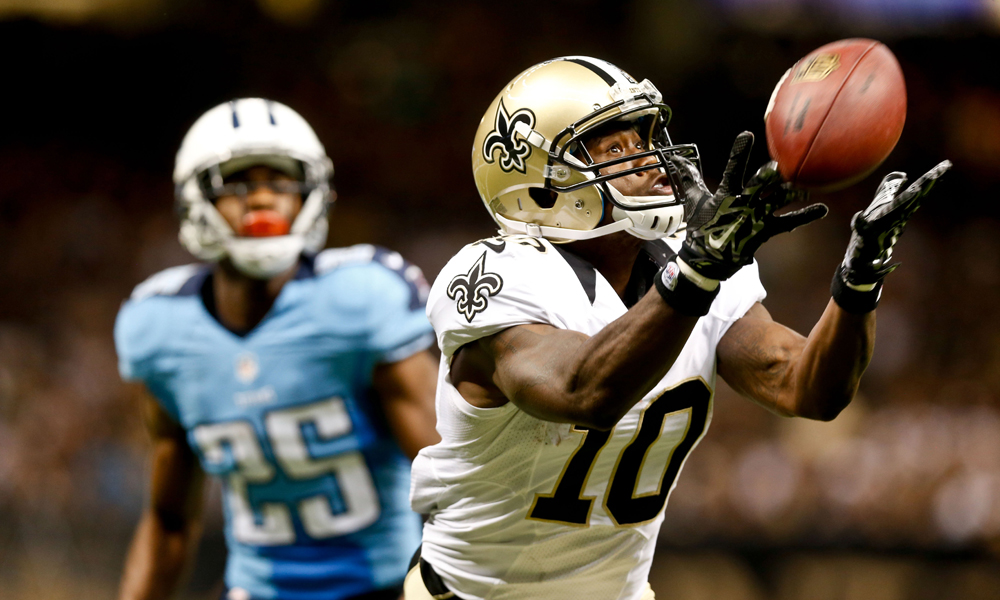News
Randy Gregory’s NFL Draft Breakdown
Randy Gregory is the best player in a deep edge-rusher class. Find out why.
In every NFL draft there are one or two positions that are extremely deep with a plethora of prospects who can be immediate and future contributors. This year, the edge-rusher class has a wealth of talent from top to bottom. To rise above the crowd, a player needs to be a special, unique type of talent to justify taking a player that high when the team kind find an extremely capable player later in the draft.
There is one player who rises above the rest in this edge-rusher class. There is one player who seamlessly intertwines size, athleticism and production to make an elite prospect.
That player is Nebraska defensive end Randy Gregory.
Gregory has the frame that makes scouts and coaches alike drool. He is listed at 6-foot-6 and 240 pounds with long vines for arms. He needs to add a little bulk, but the good news is that he is early enough in the development of his body that whoever drafts him can mold him into the type of player they want him to be, which wouldn’t be the case if he was more maxed out physically. Gregory’s size and length make him scheme-versatile as he fit as a defensive end in a 4-3, outside linebacker in a 3-4 or even a LEO in the multiple fronts used by the Seattle Seahawks and Jacksonville Jaguars.
Gregory interweaves his size with excellent production in his two years with the Cornhuskers. He has 115 tackles, 24.5 tackles for loss and 16.5 sacks to date in those two years. This gives Gregory a production ratio of 1.78, which is on par with other elite edge-rushers coming out of college like the Denver Broncos’ Von Miller.
If you look at these numbers in a vacuum they don’t mean much as plenty of players who did nothing in the NFL had higher production ratios; however, when you add in Gregory’s size, length and athleticism into the mix, it paints the picture of a masterpiece.
Gregory is an elite athlete whose athletic traits translate to the field extremely well. The best way Gregory showcases his athleticism is with his incredible upfield burst and ability to bend around the edge. It is extremely unique for a player who is as tall as Gregory to have the ability explode upfield, drop his hips and have enough flexibility in his ankles to lean his body inside at a 45-degree angle, while keeping his foot flat on the ground to maintain stability so he can sharpen his route to the quarterback.
Gregory showcases these unique athletic traits on this play:
Gregory aligns as the left defensive end in a two-point stance. After the ball is snapped, he does a great job of getting out his stance cleanly with no wasted motion. This allows him to get a great initial burst and stress the right tackles pass set. Look at how wide the right tackle gets with his kick step to try and compensate for Gregory’s initial burst. Gregory counters the wide pass set with a savvy inside step to cause the tackle to transfer his weight inside and expose his outside shoulder for an outside swim move. After Gregory performs his swim, the tackle is still on his inside hip trying to push him passed the pocket, but Gregory does an excellent job of sinking his hips and torquing his body to sharpen his angle to the quarterback where he gets his hand on the ball and forces a fumble.
The bend that Gregory showed on this play is truly special. To gain a better appreciation of the amount of flexibility Gregory used, take a look at this still shot:
Look at the angle between Gregory’s legs and the ground; someone who is 6-foot-6 should not be able to create this type of acute angle with his body. Also look at Gregory’s ankle flexion, his foot his flat on the ground, but his leg forms a 45-degree angle with the ground. That can’t be taught, it’s in an innate quality that only a small fraction of people on Earth have; Gregory just happens to be one of them.
Gregory’s ability to bend is certainly a positive, but if it is not coupled with an effective power rush or inside move, it is of no use because offensive linemen would easily push him past the pocket if all Gregory had was an outside speed rush.
Gregory uses his outside rushes to set up his inside moves exceptionally well. This play epitomizes that concept:
Gregory is shaded to the left of the left tackle in a two-point stance. He comes off the ball and attacks the offensive tackle’s outside shoulder. Once the tackle over commits to Gregory’s speed and tries to throw his inside arm at Gregory in an attempt to slow him down, Gregory swipes the tackle’s arm past him as he darts inside. After he beats the tackle, he sinks his hips low and dips his shoulders to sharpen his angle to the quarterback and get the sack.
This play embodies Gregory’s feel as a rusher. He does an fantastic job of quickly reacting to how opposing players try to block him, which leads to plays like the one above. If an offensive tackle over commits, he can beat the tackle inside. If the tackle doesn’t get wide enough with their kick slide, Gregory can beat them with a speed rush.
While Gregory’s athletic ability is fully showcased in every game he plays in, this does not mean he does not have a good understanding of the technical nuances of the game. Gregory’s technical prowess is apparent in the way he plays the run at times. He does a good job of positioning his hands inside opposing blockers, creating separation with his length and then shedding the block to make a play.
If you turn on his tape, you see several cases of this in every game. Here’s one example:
Gregory is lined up as the right defensive end with an outside shade on the left tackle. After the snap, Gregory shoots his left hand into the breastplate of the tackle. He uses his leg drive to turn the tackle so that he can effectively set the edge. Notice how he keeps his right hand free, while keeping separation with his left hand. This allows him to quickly disengage and make the tackle on Melvin Gordon.
The biggest problem with college edge-rushers is that they don’t effectively drive their feet through contact. In the above clip, Gregory not only does that, but he takes it a step further by using his feet to move the tackle to where he wanted him to go. Most players utilize leg drive to just push players straight backwards, but Gregory uses it to turn the blocker, which is extremely advanced and requires a great deal of technical mastery.
Gregory’s length certainly helps as well, but this play would without a thorough grasp on the technical nuances of playing the run and setting the edge.
One of the essential traits that a pass-rusher must have to be effective in the NFL is that they must play with an outstanding effort play in and play out. Players who don’t play with enough effort will get eaten alive in the pros as they will constantly be worn down by mammoth offensive linemen who don’t quit for the whole 60 minutes.
Gregory has this trait in spades as he continues to be in a relentless pursuit of the quarterback or ball carrier throughout games. Here is great example of Gregory’s hustle:
Gregory is lined up in a four-point stance at the right defensive end position. After the ball is hiked, the left tackle oversets to his left and Gregory darts inside to try and take advantage of the tackle’s mistake. The tackle does a good job of recovering and drives Gregory into the ground, with a little help from the guard. For most players the play would be over; however, Gregory quickly gets up and pursues of the ball from behind where he lays a thunderous hit on the quarterback for the sack.
This type of effort will make coaches love Gregory as he is never out of a play. The quickest way onto to the field for a rookie is to show relentless effort in all their given opportunities.
While he is an elite prospect, Gregory is not without his faults. The first of which is that he has a great deal of wasted movement when he is rushing the quarterback. This leads to Gregory being a tick late on a few occasions where he could have had a sack. If Gregory became more deliberate with his footwork and route to the quarterback his production would be much better than it already is.
One of the negatives that is often discussed regarding Gregory is that he is extremely slow off the snap. This could be exceedingly worrisome if true because reactionary quickness is not something that is easy to coach up. Luckily for Gregory, there is an explanation for why Gregory is slow off the snap one some plays and quick off the snap on others.
Here is an example of Gregory’s slow reaction to the snap:
This is an example of Gregory getting off the ball quickly:
In the first clip, Gregory’s eyes are on the opposing left tackle or tight end, which means he is reacting to their reaction of the snap or the quarterback’s cadence. This leads Gregory to being incredibly slow off the snap where he is still in his stance, while the rest of his teammates are already attacking upfield.
In the second clip, Gregory has his eyes on the ball, which means that he is reacting to the movement of the ball. This allows Gregory to get a much better job on the snap and attack upfield much quicker.
This is something that showed up over and over when watching Gregory and it is something that should be easily fixed at the next level.
Overall, he is an elite edge prospect who has unique physical traits and athletic ability. He can step in right away and make a significant impact as a starter or rotational defensive end, outside linebacker or LEO. He is nowhere near his ceiling yet and he’s still an excellent player who makes a noteworthy impact in every game. He has the potential to be a perennial All-Pro.
The 2015 NFL draft is “The Year of the Pass-Rusher” and Randy Gregory is the best of the bunch.
Projection: Top-10
Games watched: Miami (2014), Rutgers (2014), Michigan State (2014), Wisconsin (2014), Purdue (2014), Minnesota (2014), Illinois (2014), Purdue (2013), Michigan (2013).
News
Buccaneers admit mistake, boot Aguayo
Source: Mike Florio of ProFootballTalk
Powered by WPeMatico
News
Did Bucs put too much pressure on Aguayo?
Source: Mike Florio of ProFootballTalk
Powered by WPeMatico
News
Broncos holding their breath on Derek Wolfe
Source: Mike Florio of ProFootballTalk
Powered by WPeMatico

